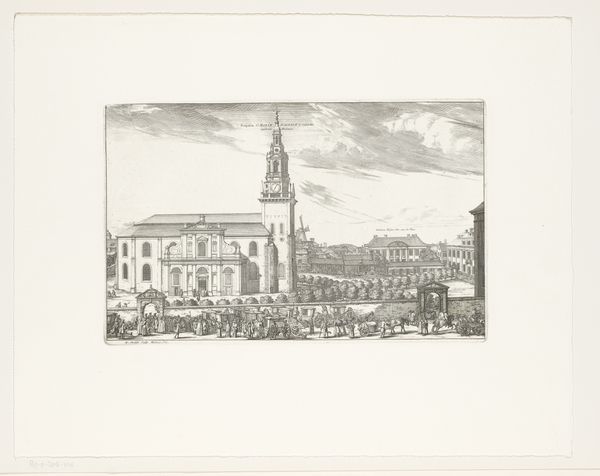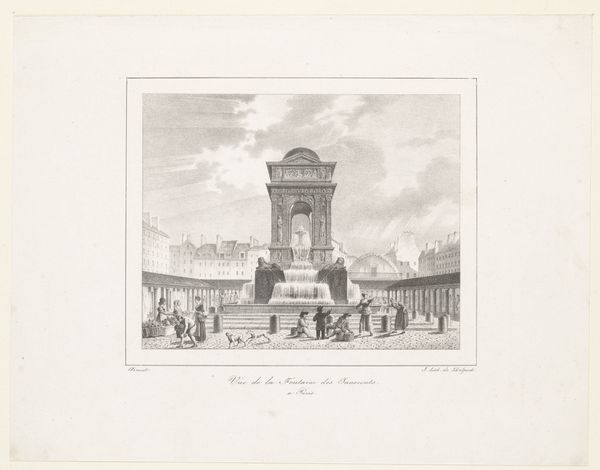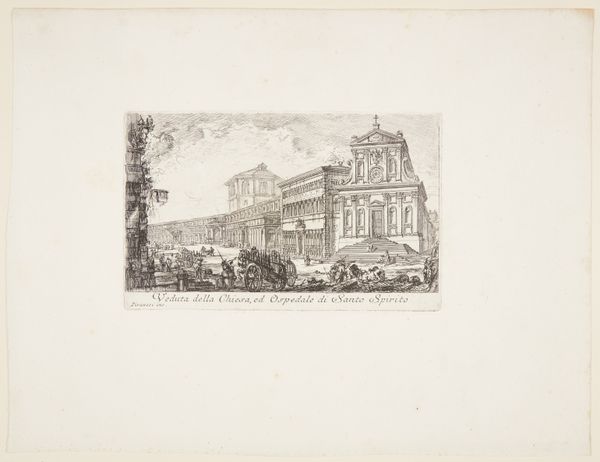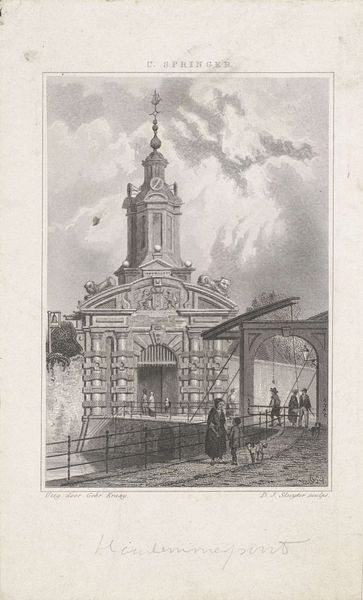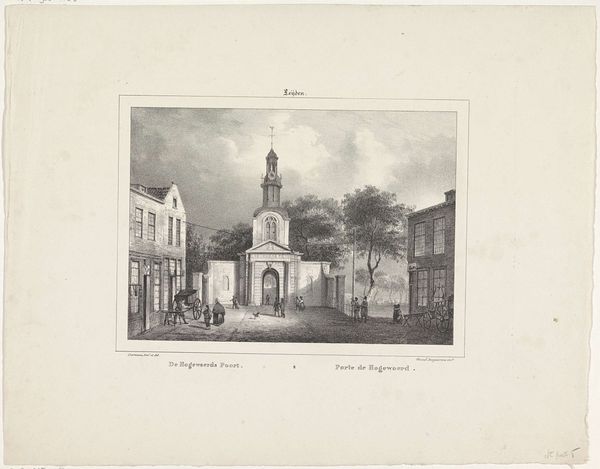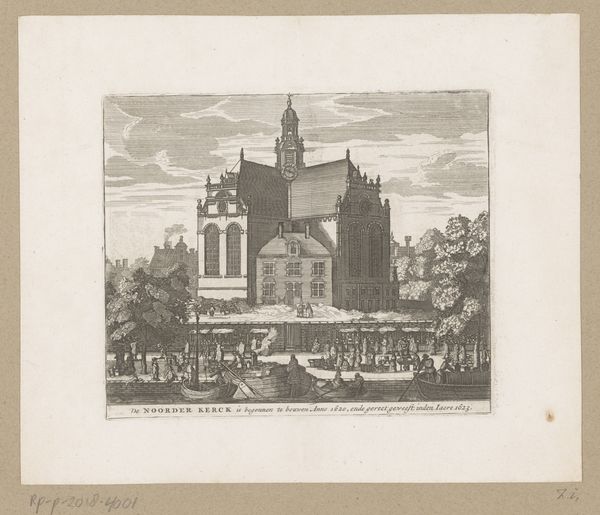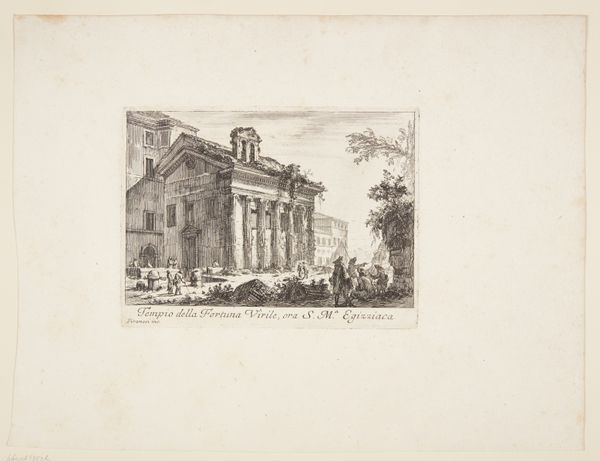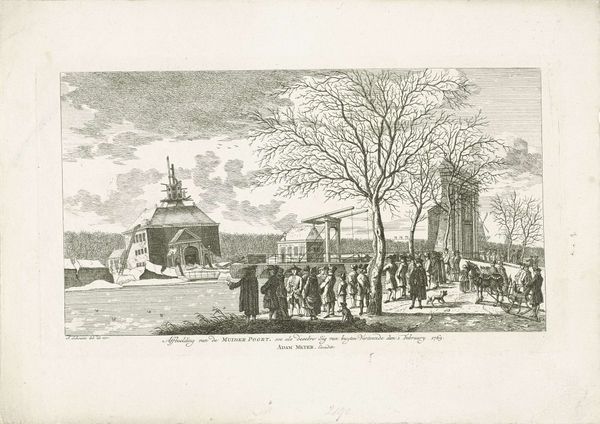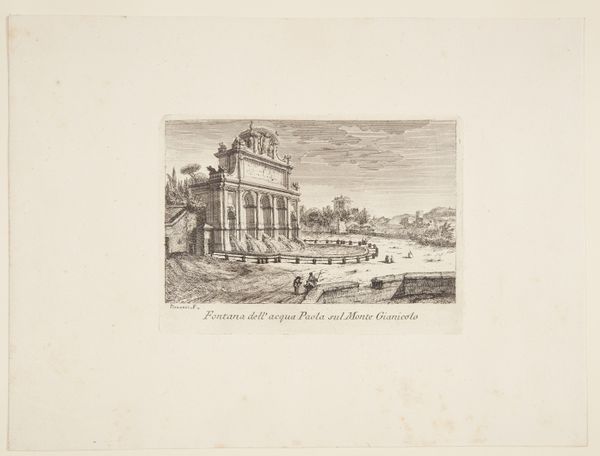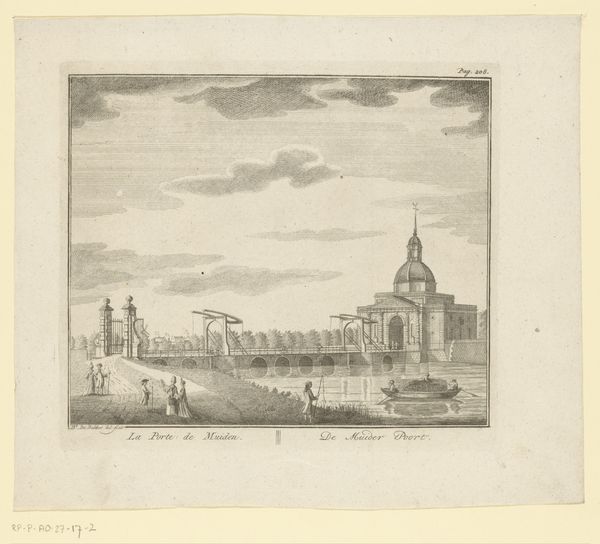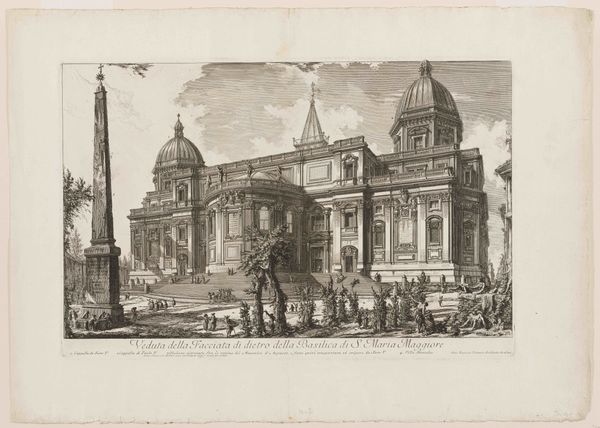
Church and Tower of Three Saints, Yassy, Modavia, July 19, 1837 1840
0:00
0:00
drawing, lithograph, print, etching, paper, pencil, graphite
#
pencil drawn
#
drawing
#
lithograph
# print
#
etching
#
landscape
#
etching
#
paper
#
pencil drawing
#
romanticism
#
pencil
#
graphite
#
cityscape
Dimensions: 193 × 269 mm (image); 194 × 269 mm (primary support); 342 × 454 mm (secondary support)
Copyright: Public Domain
Editor: Here we have Auguste Raffet's "Church and Tower of Three Saints, Yassy, Moldavia, July 19, 1837," created around 1840, employing lithography, etching, pencil, graphite and paper. It strikes me as a very balanced composition despite its apparent spontaneity. What are your initial observations about the work’s formal qualities? Curator: The piece is fascinating for its exploitation of line and form. Note how Raffet uses distinct line weights to create depth; the foreground figures are rendered with darker, more defined lines compared to the more subtle gradations used for the background architecture. What does this layering accomplish? Editor: It feels like the darker lines bring those figures into the viewer's space, making them feel closer, more present. Almost as if the artist is setting the stage. Curator: Precisely! And consider the interplay between the geometric precision of the buildings and the more organic, sketch-like quality of the figures and foliage. Does this contrast create any tension for you, and if so, how does the artist reconcile it? Editor: It does! The figures feel a little scattered compared to the clean lines of the church. Maybe he's trying to soften the rigid lines with the natural and social elements to create visual harmony. Curator: Indeed, that careful orchestration of detail reveals a sophisticated understanding of spatial relationships and compositional balance, which results in this intriguing dynamic. I think what stands out is the geometric nature of architecture with nature with humankind, forming a coherent whole that elevates the lithograph's impact, creating its distinctive charm. Editor: I see! So by studying the linework and composition we can understand the artist's process, what was important for them to highlight, and ultimately have a greater appreciation of the image itself. Curator: Exactly! Formal analysis provides a structure that facilitates observation-driven interpretation of the artwork.
Comments
No comments
Be the first to comment and join the conversation on the ultimate creative platform.
